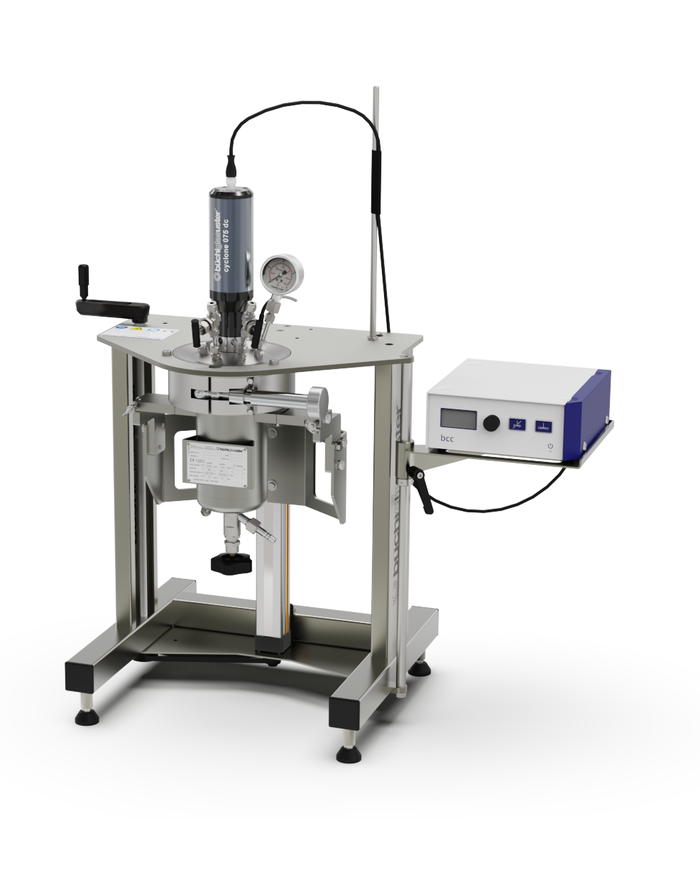Products
Glass reactors & process equipment
Pressure reactors / stirred autoclaves
Other products

| Reactor volume: | 100 to 300 ml |
| Pressure: | -1 (FV) to + 150 bar |
| Temperature: | - 20 °C to 300 °C |
| Material: | Borosilicate glass 3.3, stainless steel, Hastelloy® |
This high pressure reactor system is designed for the use of interchangeable steel pressure vessels. Safety features guarantee safe reactions under pressure.
The stainless steel or Hastelloy® reactors ensure high resistance against acids. Visual process control and monitoring is also possible under high pressure by using steel pressure vessels with sight glasses.
Various low to high torque magnetic drives ensure efficient mixing and stirring low to high viscosity process media as well as excellent heat transfer. The fast action closure and vessel lift makes changing vessels quick and easy without the use of tools.
The modular setup of the midiclave system allows changing or upgrading for new tasks at any time.
A wide range of accessories for feeding of liquids, solids, gas, a fast action closure device, reactor lift and others like catalyst baskets etc. are available – talk to us to define the right setup for your specific need.
Main reserch area was developing efficient, sustainable, and economic processes for waste chemicals upgrading into valuable hydrocarbons. Our Buchi midiclave reactor provides precise control over temperature, pressure, and residence time. Paired with its powerful cyclone stirrer, this reactor ensures thorough mixing of the viscous reactants, facilitating the controlled conversion of the carbon-rich feed into targeted products.
Additionally, the reactor is invaluable for numerous other batch reactions involving liquid and gaseous hydrocarbons such as hydro treatments. Its clear layout and easy-to-use fast action closure system make it an ideal tool for educational purposes, extending its utility beyond practical applications.
Empa Dübendorf, PD Dr. Andreas Borgschulte, Dr. Ali J. Saadun
Büchi Pressure Reactors (English)